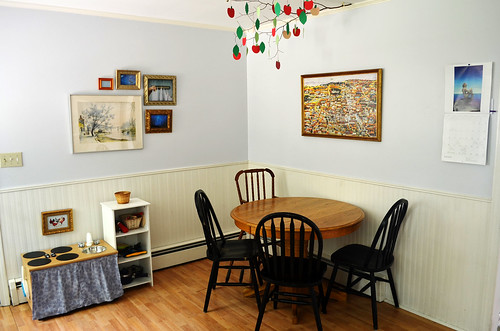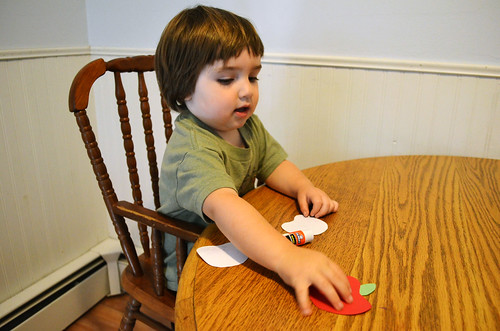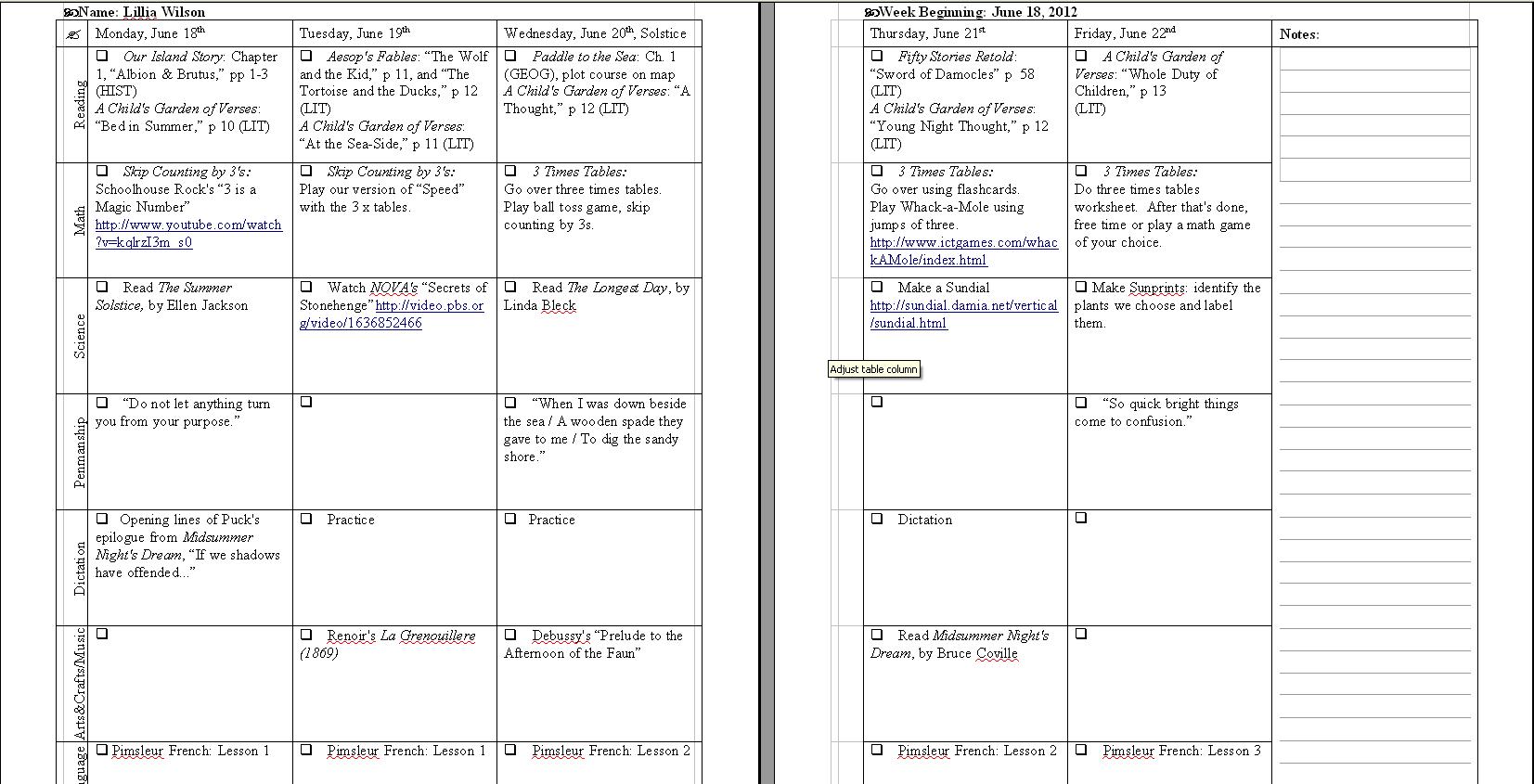Failure is simply the opportunity to begin again, this time more intelligently. — Henry Ford
Last week was a lesson in accepting defeat, and waiting to see what sort of phoenix would rise from the ashes of my failed plans. What is one to do when everything is all wrong? Why, fix it, of course!
My plan of attack was twofold:
Part 1 – repair the damage from last week’s fighting.
Part 2 – do some serious research!
This week we took it easy. We meandered through some Life of Fred, some history, and some literature (we started reading the Old Testament this week, as part of our Ancient Near East unit). One afternoon we all baked chocolate chip cookies together. The kids bonded, and Lillia learned some things about baking (measuring, how to read recipes, etc). So, when in doubt, make cookies!
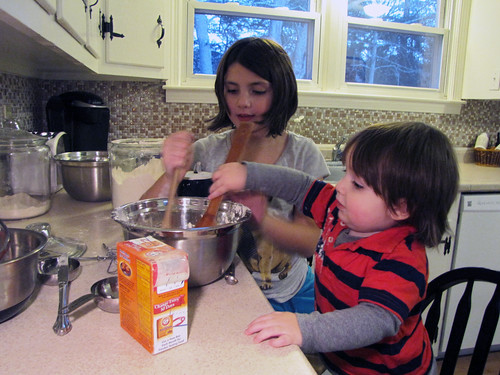
In terms of research, I checked Hoagie’s Gifted for language arts recommendations. Then, I spent quite a while surfing for books on Amazon (something I do on a regular basis, anyway). I found lots of great language arts books that are not a “curriculum,” per say, but could work well together, and ordered them. Don’t let anyone tell you that homeschooling saves you money.
Here’s what I ordered:
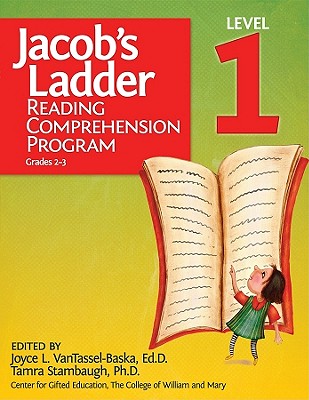 From Amazon.com: The Jacob’s Ladder Reading Comprehension Program targets reading comprehension skills in high-ability learners by moving students through an inquiry process from basic understanding to critical analyses of texts using a field-tested method developed by the Center for Gifted Education at The College of William and Mary. Students in grades K–9 will be able to comprehend and analyze any reading passage after completing the activities in these books.
From Amazon.com: The Jacob’s Ladder Reading Comprehension Program targets reading comprehension skills in high-ability learners by moving students through an inquiry process from basic understanding to critical analyses of texts using a field-tested method developed by the Center for Gifted Education at The College of William and Mary. Students in grades K–9 will be able to comprehend and analyze any reading passage after completing the activities in these books.
Using skill ladders connected to individual readings in poetry, short stories, and nonfiction, students move from lower order, concrete thinking skills to higher order, critical thinking skills. All of the books, geared to increasing grade levels, include high-interest readings, ladders to increase reading skill development, and easy-to-implement instructions. The ladders include multiple skills necessary for academic success, covering language arts standards such as sequencing, cause and effect, classification, making generalizations, inference, and recognizing themes and concepts.
This sounds like just what we need, and since Lillia’s major academic strength is language arts, I think that a gifted program will be challenging enough to keep her interested.
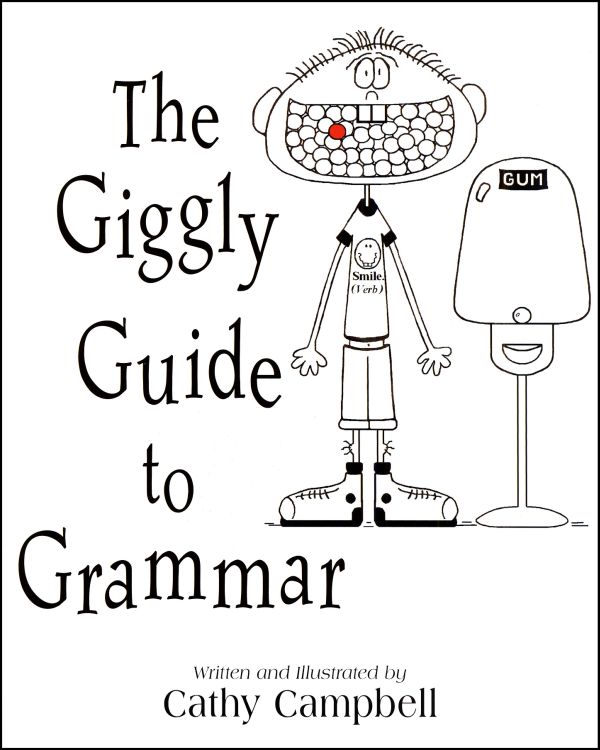 From Amazon.com: It’s Shel Silverstein meets Strunk and White and the results are both hilarious and instructive. With over 120 illustrations and gobs of delightfully goofy examples and exercises, this book provides a lighthearted and ludicrous guide to the essential elements of language and grammar…not to mention a few writing tips thrown into the mix.
From Amazon.com: It’s Shel Silverstein meets Strunk and White and the results are both hilarious and instructive. With over 120 illustrations and gobs of delightfully goofy examples and exercises, this book provides a lighthearted and ludicrous guide to the essential elements of language and grammar…not to mention a few writing tips thrown into the mix.
Grammar has often been taught as joyless process of memorizing rules and diagramming phony sentences, but most writers will tell you that grammar actually promotes a love of language. Not only can the study of grammar be fun and joyful, this unique primer can also be used by adults everywhere who simply need a single volume at the ready to keep them on the straight and narrow…and laughing all the way!
I have high hopes for this book. I hope it’s not too silly, because there is a fine line between treating a subject with humor and deliberately dumbing it down.
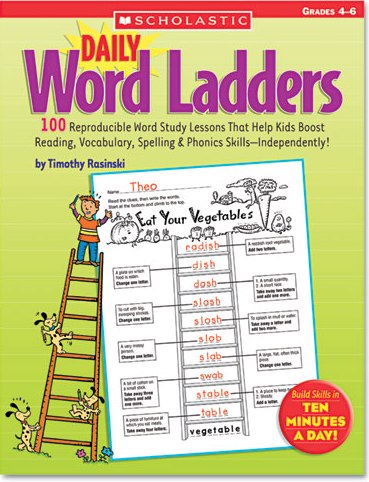 From Amazon.com: Kids climb to new heights in reading and writing with these engaging, reproducible word building games! Kids read clues on each rung, then change and rearrange letters to create words until they reach the top. All the while, they’re boosting decoding and spelling skills, broadening vocabulary, and becoming better, more fluent readers.
From Amazon.com: Kids climb to new heights in reading and writing with these engaging, reproducible word building games! Kids read clues on each rung, then change and rearrange letters to create words until they reach the top. All the while, they’re boosting decoding and spelling skills, broadening vocabulary, and becoming better, more fluent readers.
I bought this book mostly because it looked like a lot of fun. You start with one word (for example “vegetable”) and you either add or subtract letters as you go up the ladder to create new words. We’re not doing a formal spelling program, but I think if we did one word ladder a week, Lillia’s spelling would definitely improve. You have to spell the words right, or they don’t work in the puzzle.
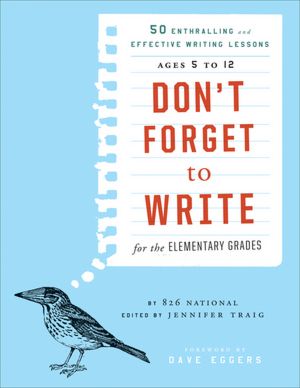 From Amazon.com: If you believe that teaching creative writing should be done creatively, you’ve picked up the right book. Don’t Forget to Write for the Elementary Grades offers elementary teachers 50 creative writing lesson plans developed by the imaginative and highly acclaimed 826 National writing centers. The book is designed to be a handy teacher’s aide that can help reach and inspire all students ages 5 to 12 (even those most resistant to creative writing). The lessons range from silly (“Brains! or, Writing with Zombies”) to practical (“How to Write a How To”), from sports to science, music to mysteries, and everything in between (yes, there is an academic purpose to having Harry Potter and Spiderman battle some evil ninjas). Each lesson is written by educators, 826 volunteers, celebrated authors, actors, and writers, and all are linked to rigorous writing standards.
From Amazon.com: If you believe that teaching creative writing should be done creatively, you’ve picked up the right book. Don’t Forget to Write for the Elementary Grades offers elementary teachers 50 creative writing lesson plans developed by the imaginative and highly acclaimed 826 National writing centers. The book is designed to be a handy teacher’s aide that can help reach and inspire all students ages 5 to 12 (even those most resistant to creative writing). The lessons range from silly (“Brains! or, Writing with Zombies”) to practical (“How to Write a How To”), from sports to science, music to mysteries, and everything in between (yes, there is an academic purpose to having Harry Potter and Spiderman battle some evil ninjas). Each lesson is written by educators, 826 volunteers, celebrated authors, actors, and writers, and all are linked to rigorous writing standards.
The book’s activities are based on proven pedagogy that can help students develop the skills to organize their ideas, craft their arguments, revise their work, state their points of view, and peer-edit, all while having a blast and learning an awful lot about the joy and hard work of writing.
Since none of the writing programs I have tried so far have even remotely interested Lillia, I figured we’d go with an entirely different approach. This book is endorsed by Daniel Handler (a.k.a Lemony Snicket), and it looks really, really good. Here’s a nice video about it:
[youtube http://www.youtube.com/watch?v=zu-qJ-egAE8&w=560&h=315]
So, that’s the roundup. I will certainly be sure to write about our progress with the books as we use them.

